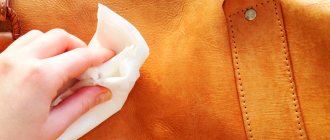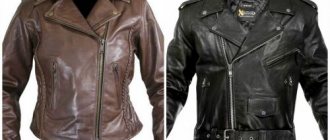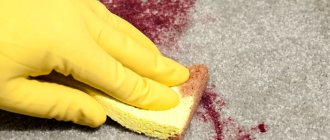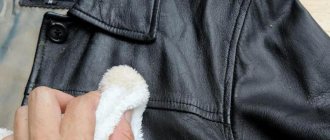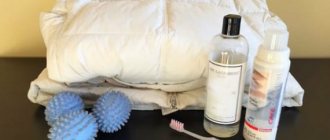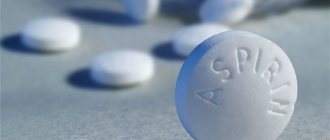Home / Care
Back
Published: 05/11/2021
Reading time: 2 min
0
15
The fashion for leather clothing and accessories does not lose its relevance. But sooner or later there comes a time when you need to wash leather pants, a skirt, clean gloves or a bag. Despite their practicality, such things require an individual approach and adherence to certain washing rules.
- 1 General rules 1.1 Cleaning dry and wet
- 1.2 Hand and machine wash
- 1.3 Removing stains
Is it possible to wash a leather jacket?
First, rub a damp cloth over the skin to test the material's reaction. If there are traces on the fabric, then the coloring pigment is unstable and can be easily washed off with water. In such cases, it is better not to subject the leather to wet treatment and have the item dry cleaned - washing may cause the jacket to fade.
It is not recommended to wash leather in an automatic machine: mechanical stress and large amounts of water can damage the material and wash out the coloring components. Due to degreasing, the skin can dry out - become rough and cracked. Manufacturers often recommend manual dry or wet cleaning. Care information can be found on the label on the lining of the jacket.
How to wash a leather jacket in a washing machine
Machine wash only when permitted by the manufacturer. To avoid damaging your skin, select the most delicate mode and set the temperature to 20–30°C. It is better to use liquid detergents: the powder does not dissolve well in cold water, so it can leave white streaks on the material.
How to wash a jacket correctly
- Take everything out of your pockets. Fasten all buttons and zippers.
- Select one of the modes: “wool”, “delicate”, “hand wash”.
- Turn off the spin cycle - friction at high speeds can ruin the material. If the jacket still needs to be wrung out, then the number of revolutions should not exceed 300–400.
After washing, hang the jacket on hangers over the bathtub to drain.
How to wash a leather jacket by hand
Step-by-step washing instructions:
- Check all pockets: there should be no foreign objects in them.
- Pour warm water (no more than 40°C) into a wide basin and add detergent. Liquid laundry detergent is suitable for delicate fabrics.
- Immerse the jacket in the basin for 10 minutes and let it absorb the soap solution.
- Wipe all contaminated areas with a soft sponge.
- Take out the jacket and hang it on a hanger to drain.
- Pour warm water into a basin, lower the item and rinse. Repeat the procedure until the water becomes clear.
- Take out the jacket and hang it on wide hangers so that the shoulder line does not deform under the weight of the skin. When the water has drained, transfer the item to a terry towel - it will absorb excess moisture.
What happens if you wash faux leather items in a machine?
The experience of washing inexpensive jackets made of thick eco-leather or imitation suede in an automatic machine is rather positive. With a gentle regime, such things tolerate “water procedures” well, and dirt is washed off perfectly! The rules that must be followed are even simpler.
- Choose a delicate program and a temperature no higher than 40 degrees.
- Use a gentle spin - no more than 400-500 rpm.
- Use liquid detergents.
- Dry on a hanger at room temperature.
Local cleaning
Gate.
Gloss and traces of fat from the collar can be removed using cosmetic milk or lotion. Apply a little product to a cotton pad and rub the skin. Then treat the collar with glycerin - it will give the leather shine and protect it from minor damage.
Cuffs.
Dilute ammonia with water in a 1:1 ratio. Soak a soft cloth in the solution and wipe the sleeve. Another means of removing stains is lemon juice: unlike ammonia, it has a pleasant smell. When finished cleaning, rub the cuffs with glycerin or baby cream.
Lining.
Turn the jacket inside out. Prepare a solution of warm water and half a bar of grated soap. Apply the soap solution to the lining using a sponge and rinse with warm water. Dry the jacket turned inside out on hangers. When washing, try not to wet the skin.
How to soften your skin
Hardening of leather items after washing is common. To make them soft at home, you can sometimes use popular methods:
- Leather shoes or belts are lubricated with cooled rendered goose fat. Excess is carefully removed with a paper towel.
- A softening hand cream will help quickly restore the elasticity of your gloves. This product is easy to use. It is enough to put gloves on your hands, pick up a little cream and spread it over the entire leather surface with light massaging movements.
- A homemade ointment can make leather items softer. To make it, beeswax is brought to a liquid state using a water bath. Add turpentine and castor oil to it in equal volumetric proportions. The treatment is carried out with a cooled composition. After drying, it will additionally provide protection from moisture.
Household skin products
Leather items will look luxurious for a long time if they are regularly cared for using available household products:
- Ammonia
Combine liquid soap, warm water and ammonia in equal proportions. A soft cloth is moistened in the solution and the contaminated areas are wiped.
You can replace soap with baking soda. To do this, pour warm water - 500 ml - into an enamel bowl. Dissolve soda in it - 3 tsp. and add ammonia - 1 tbsp. l.
Ammonia for leather products
- Petrolatum
If you want to restore the shine to things made from rough leather, it is recommended to rub them with Vaseline before drying. Then the surfaces are polished to a shine with a clean rag. After this procedure, not only softness will be provided, but also protection from getting wet in inclement weather.
- Alcohol with lemon juice and glycerin
Often, greasy areas form near pockets, on collars or cuffs. To deal with them, you don't need to wash the entire thing. First, wipe problem areas with ethyl alcohol and then with fresh lemon juice. Allow to dry and treat with glycerin.
- Egg white
Well-beaten egg white refreshes leather surfaces well and gives them an impressive shine. Take a soft textile flap and rub the foam. After finishing processing, rub with flannel until shiny.
- Onion
The onion is a good way to refresh skin that has lost its decorative effect. It is cut and contaminated. The product should then be well ventilated.
Leather care products
In order not to deform the leather item, it is advisable to use professional care products. Their range is extensive, so it is possible to choose an option suitable for solving a specific problem.
When used correctly, it is possible not only to remove dirt from leather products and modern durable leatherette, but also to restore the damaged structure, restore shine and elasticity, disinfect, make them more durable and waterproof.
ARTICLE FOR YOU
How to properly wash cross stitch at home
Leather care products
The following varieties are used:
- water-repellent sprays that provide additional impregnation to protect against snow and rain;
- a special sponge soaked in softening and cleansing compounds;
- wax that eliminates creases, cracks, and abrasions;
- liquid skin that eliminates scratches and masks areas that have lost color;
- foam that removes dirt and restores shine.
When using, follow the instructions.
Drying
After washing, leather items must be dried, avoiding creases and loss of elasticity. There are several rules to follow when carrying out this procedure:
- Special lasts made of plastic or wood are inserted into shoes. You can put crumpled paper inside.
- The belt, backpack or bag should be hung in a ventilated area.
- Pants, skirt, jacket are turned inside out. A terry towel is spread on a horizontal plane. Lay the product, carefully straightening all the folds. You can place them on a hanger, making sure that creases do not form.
- After removing excess moisture, the gloves are straightened and pulled onto the uniform. You can buy a special plastic dummy hand or make one yourself from wire. Leather items should be dried away from heaters and radiators, providing protection from direct rays of the sun.
Drying leather goods
Removing difficult stains
There are special methods for cleaning leather to remove stains of grease, blood, paint or other contaminants.
Removing fat
One of the most effective ways to eliminate fat is with alcohol-containing formulations, such as lotion or cologne. Apply the liquid to a cotton pad and treat the dirt, then remove the dirt and alcohol residue with a damp cloth. The product has a pungent odor, so you should air the jacket outside.
Removing stains
Minor stains can be easily removed with liquid soap. For more difficult stains, choose a method suitable for the specific type of stain.
Blood stains.
In most cases, it is enough to wash off the blood stains with cool soapy water and scrub with a soft brush. If this method does not work, then dissolve 2 aspirin tablets in a small amount of water (50 ml) and treat the stains with the composition. Then wipe the area of skin with a damp, soft cloth.
Paint spots
. Water-based paint, such as watercolor or gouache, can be easily removed with a damp sponge. Oil paint is more difficult to get rid of: you will need vegetable oil and a soap solution. Apply the oil to a cotton swab and rub the stain until the dye comes off the skin. Remove oil traces with a soft cloth soaked in soapy water. Then run a damp cloth over the area of the jacket.
Only aggressive agents will help remove interior paint: for example, white spirit. Be careful: before using chemicals, test its effect on an inconspicuous area of skin.
Glue stains.
Contaminants must be removed immediately after the glue gets on the skin. Use lemon juice or vinegar: soak a cotton swab in the product and rub the stain. Try not to touch the skin around the spot. Remove any remaining product with a damp cloth.
If the glue has dried, wipe the stain with a cotton pad soaked in nail polish remover. After treatment, remove any remaining product with a damp cloth. Air the jacket to remove any strong odor.
Grass marks.
Stains can be easily removed with a paste of ground coffee diluted with warm water. Distribute the product over all contaminated areas. Wait 5 minutes, then scrub problem areas with a soft-bristled brush. Then remove the coffee grounds with a damp cloth.
Refreshing
If the smell of sweat or tobacco is ingrained into your skin, then simple remedies will help to refresh it.
Lemon juice.
Wipe the surface of the jacket with a cut lemon or a cloth soaked in lemon juice. To treat dark skin, you can prepare a paste from orange peel. Apply the product to the material and leave for 5-10 minutes, and then remove any traces of it with a damp cloth.
Coffee
. Sprinkle ground coffee beans on your jacket and leave for a day - the product absorbs odors well. Then remove the coffee with a soft cloth. To avoid leaving stains on light skin, you can put the coffee in a fabric bag.
Soda.
Helps get rid of persistent sweat odor. Sprinkle the powder on the inside of the jacket, leave for 10 minutes, and then shake the product off the lining.
To eliminate strong odors, use a special recipe. Sprinkle the armpit area liberally with baking soda and spray it with water from a spray bottle to make a thick paste. Let the product dry and then remove it with a soft cloth.
Tips from Garderobus!
If you washed your jacket with powder and saw a white residue on it after spinning, repeat rinsing.
If you don’t have liquid detergent on hand, you can use shampoo or shower gel, but in small quantities, as these products have good foaming ability.
It is better not to wash jackets or jackets made of inexpensive and thin artificial leather, especially with a smooth, shiny surface, as well as bags made of cheap leatherette. Low-quality material may not withstand such treatment; the products will quickly peel and peel.
Rules for cleaning a light leather jacket
Light leather items are especially sensitive to external influences and easily deteriorate.
Prepare a special solution for cleaning. Mix water and liquid soap in a 1:1 ratio and add a tablespoon of hydrogen peroxide to them. Moisten the sponge with the prepared solution and treat the contaminated surface. Remove any remaining product using a soft damp cloth. Peroxide can lighten stained areas, so test the product on an inconspicuous area of fabric first.
How to wash skin?
Naturally, the best cleansers will be specially designed skin care products: wipes, sprays, sponges soaked in a special solution; they quickly remove dirt without damaging the skin structure.
If these are not available, then we recommend easier-to-use products that are likely to be found in any housewife’s kitchen arsenal.
- dishwashing detergent;
- vinegar;
- lemon juice;
- egg white;
- refined gasoline.
Drying a leather jacket after washing
When drying, follow these rules:
- Dry your jacket away from heat sources: do not leave it on a radiator, heater, or in direct sunlight. Exposure to high temperatures can deform the material.
- You should not hang a wet jacket in the bathroom: high humidity also has a bad effect on the skin - it loses its elasticity, becomes stiff and hard. It is better to dry your jacket on the balcony or in a well-ventilated room.
- You can speed up the process with a hairdryer or fan, but the air must be cold.
- Dry your jacket only in an upright position. Choose a hanger that follows the shape of your shoulder to avoid creases in your clothes.
What is leather for sewing clothes?
Leather is a natural, durable, durable material that is obtained by tanning animal skins. Its classification depends on the type and age of the animal, the technology of material processing, and painting. Before use, the leather goes through several stages of processing: it is cleaned of connective tissue, salted so that it does not rot, tanned - this is the most important process in processing, with the help of tanning the pores are filled with a special substance that removes various kinds of bacteria and stops the decomposition process.
Important! Both in ancient times and in the modern world, leather items are in great demand. Its distinctive qualities are that it perfectly protects from natural factors, is vapor permeable, wear-resistant, does not emit harmful substances, and is relevant at all times.
Rules for caring for leather outerwear
Proper care will extend the life of your leather jacket. Follow a few tips:
- High humidity is harmful to the skin. Therefore, it is better not to wear the jacket in the rain and store it in a dry, ventilated area. If your clothes do get wet, be sure to wipe them dry with a clean, soft cloth.
- Do not use hard brushes or cloths with rough fibers for cleaning.
- Periodically treat leather clothes with cream or special impregnation with fatty components - this will protect the material from drying out, cracks and creases.
- Store your leather jacket on hangers with the zipper closed to prevent damage to its shape.
If the material gets dirty, it is better to clean it dry or use local washing. Machine wash your jacket only as a last resort.
Drying rules
Regardless of how the jacket was washed: completely, partially, by hand or in a machine, it is necessary to dry it before putting it on. Otherwise, the skin will certainly become deformed, especially in the folds.
Dry your skin like this:
- place on a wire rack, allowing excess water to drain;
- place towels in the sleeves, fasten them and place them on thick fabric (it must be changed as soon as it gets wet);
- when the skin is almost dry, hang it on a hanger;
- A completely dry jacket should be treated with glycerin or a special conditioner and left until the product is completely absorbed.
Please pay special attention: the skin should dry on its own. You cannot use an iron, hair dryer or place the product near a heating device to speed up the process!
A leather jacket will complement your wardrobe in spring and autumn for many years, if you follow the rules of wear and care. To protect delicate material from the action of aggressive cleaning agents, you need to periodically wipe the product with a damp cloth (necessarily after rain), treat it with water-repellent agents and caring conditioners 1-2 times a season.
How to wash an eco-leather down jacket?
Eco-leather is a modern material that has gained great popularity due to its spectacular appearance and high quality. The base is made of cotton, and the top layer is made of polyurethane. Thanks to this combination, clothing acquires absolutely remarkable properties:
- does not cause allergies;
- wears for a long time;
- comfortable;
- allows air to pass through;
- almost does not get dirty;
- does not get wet;
- does not deteriorate from water.
It is rare to wash products made from this material, but sometimes it still needs to be done. Stains can be easily washed off with clean water, but sometimes it is enough to simply wipe the dirty area with a damp cloth.
Removing stains from the surface of the skin
Stains, depending on their origin, can be removed in several simple ways:
- Traces and white stains from salt are easily dissolved with a solution of water and vinegar (4:1 ratio).
- Ink stains can be removed with alcohol or warm glycerin.
- Grease stains can be removed with regular dishwashing detergent.
- Fresh blood stains can be removed with liquid soap dissolved in water. Old stains will disappear after treatment with hydrogen peroxide.
As you can see, cleaning or washing a leather jacket at home is quite simple. Proper regular care will maintain its original attractive appearance.
How to clean and wash
You cannot wash items with leather inserts at home. They will easily lose their shape and appearance.
To get your leather item in order, take it to the dry cleaner. And if previously, after dry cleaning, an item could “shrink” by 1-2 sizes, but thanks to modern cleaning methods and gentle products, leather clothing will retain its original shape and size. Clothes with minimal leather decoration (for example, a jacket with leather piping) will be cleaned by hand.
At home, you can only clean things with leather inserts from minor dirt or remove a small stain by following simple rules:
- Light stains (such as mud splashes) can be removed with a clean, damp cloth.
- Oily stains on the skin can be easily removed with ordinary dishwashing detergent. Apply a little product to the stain, hold it for about 3-5 minutes and wipe off with a damp, clean cloth. By the way, small greasy stains tend to disappear over time, so they don’t need to be removed.
- If your leather dress has a lining and it gets dirty, you can wash it in cold water. The main thing is not to wet the skin. To do this, you need to turn the item inside out, carefully wash it by hand and dry it in the same inside-out state.
Washing the lining
The removable lining can be washed in an automatic machine; just remove it and put it in the drum. But if the lining does not come off, then you will need to follow the recommendations:
- Turn the jacket inside out to wash the lining.
- Separate the fabric from the skin as much as possible and hand wash with cold water.
- It is better to clean lightly soiled areas without using soap. If the contamination is significant, then prepare a soap solution.
- Dry the product inside out until the lining is completely dry.
Video
How to remove greasy stains from the surface of natural leather, see the following video:
About the author:
Electronic engineer with many years of experience. For several years he was involved in organizing the repair of household appliances, including washing machines. Loves sport fishing, water tourism and travel.
Found a mistake? Select it and click the buttons:
The first officially patented washing machine was made of wood and was a box with a frame, half filled with wooden balls. Laundry for washing and detergent were loaded inside and the frame was moved using a lever, which, in turn, made the balls move and grind the laundry.
Astronauts, while in Earth orbit, solve the problem of dirty things using an original method. Clothes are dropped from the spacecraft and burn up in the upper atmosphere.
In the 19th century, washing ladies' toilets took a lot of time. The dresses were first ripped open, and then each part was washed and dried separately so that the fabric did not become deformed. After washing, the clothes were sewn again.
Biodegradable household chemicals Hiddo from Japan
How to descale a steam generator
Instructions for installing a ceiling dryer-liana
DIY clothes dryer
DIY clothes dryer made from plastic pipes
What is the difference between a steam generator and a steamer: which is better to choose?
How to choose a clothes dryer for your home: tips, parameters
Repairing a clothes steamer with your own hands
How to choose a floor-standing clothes dryer: tips, best models, video
How to descale a steamer at home
Why water flows from under the washing machine: causes and elimination of the defect
How to clean a washing machine with vinegar and other products
How to connect a washing machine yourself
Leather outerwear is extremely popular, despite the fact that such items are quite expensive and require constant care. Rain, snow, wind, smog - all this worsens and negatively affects the natural condition of the skin.
How to wash a leather jacket and can it be done at home without harming the delicate material?
How to clean a specific type of dirt
If a jacket that has been washed in a machine or by hand needs to be washed again, it is better to try to remove one or another stain with special means:
- Fat. To remove oily stains from the skin, you can try using chalk. To do this, we make a powder out of it, and then sprinkle the stain with this loose composition. We leave this product to act overnight, and then simply clean the dirt with a brush. Instead of chalk, you can use any detergent that perfectly removes grease from any surface.
- Ink. You can easily get rid of pen stains using the well-known adhesive tape. To do this, tear off a small piece of it, press it against the stain, and then remove the stain with a sharp jerk. This manipulation must be done several times.
- Dye. To remove stains from a leather jacket in the washing machine, you need to use nail polish remover or any solvent. Apply the liquid to a cotton swab and wipe the paint with it. After this, the item must be washed to get rid of the unpleasant odor.
- Salt stains. Take a liter of water and add 3 tablespoons of vinegar to it. Mix the liquid and apply it to the stains. After this, hang the product outside to dry completely.
Proper washing of a leather jacket will help preserve the appearance of your outerwear, so do not ignore these rules and tips if you want your leather jacket to always remain well-groomed.


